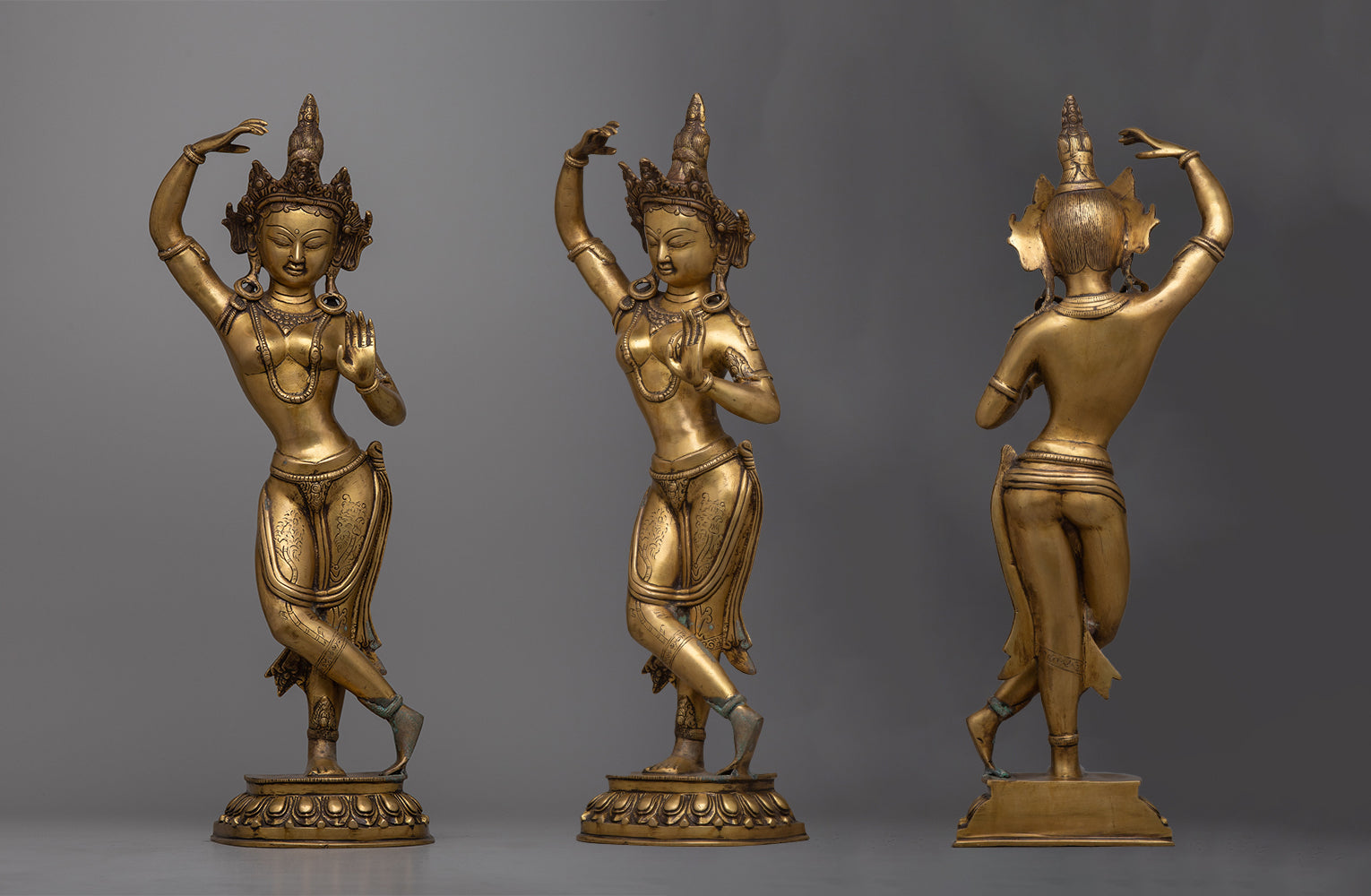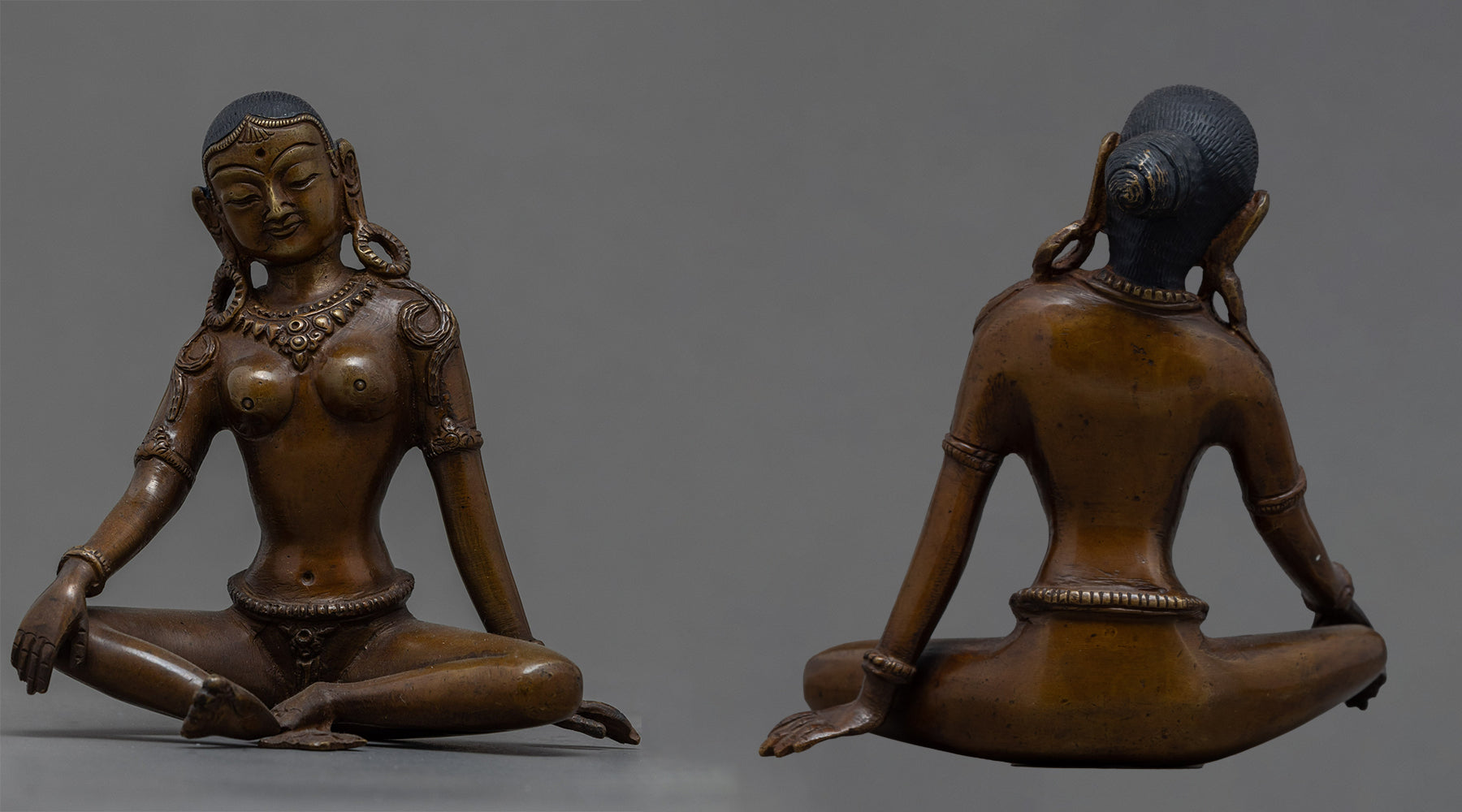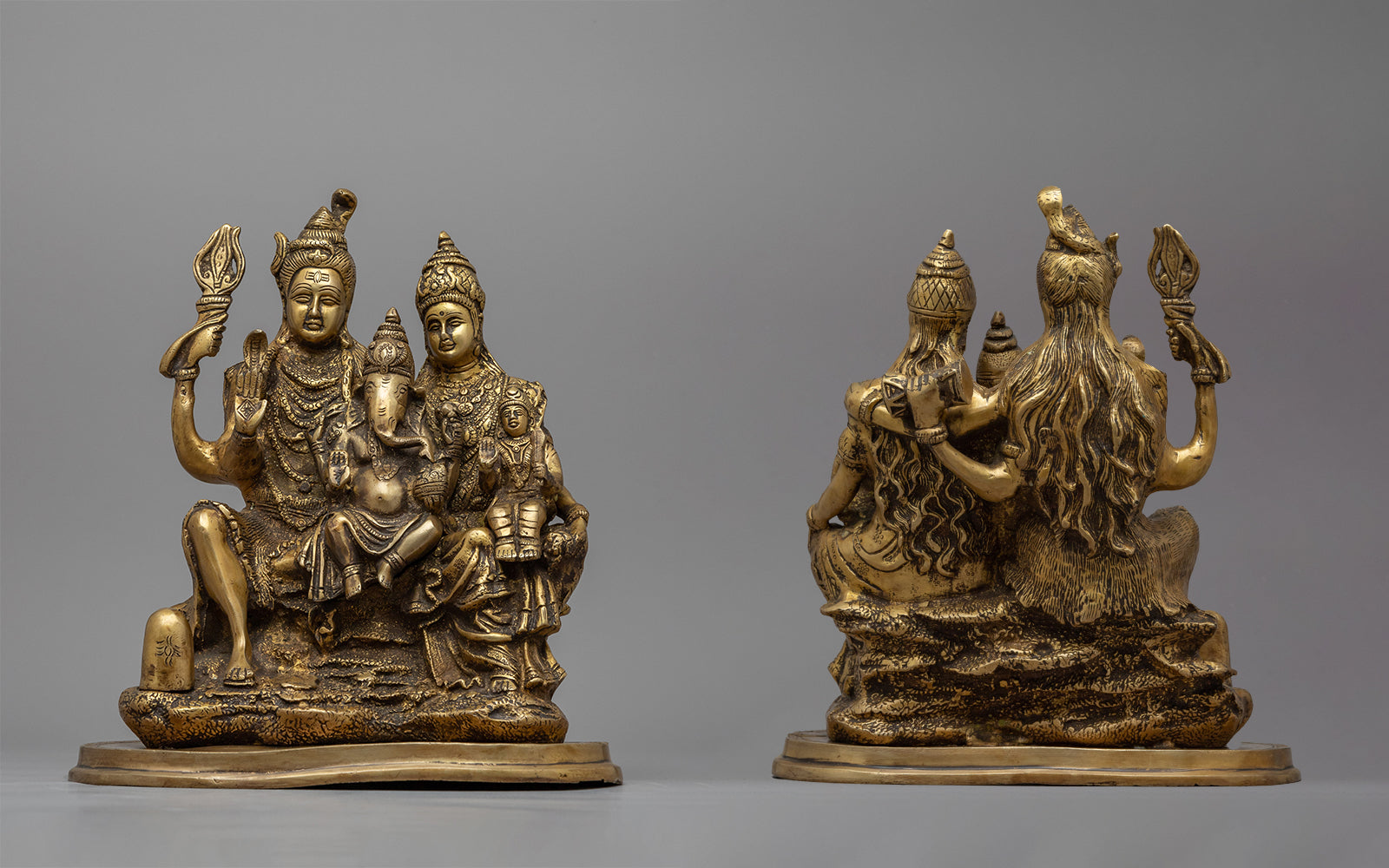Goddess Parvati: Divine Feminine of Strength and Devotion
The Goddess Parvati represents feminine power, fertility, and devotion. Parvati, the Hindu trinity's destroyer and Lord Shiva's consort embodies the incredible might of the Goddess together with the softness of a loving mother and wife. Her life tales provide:
- Witness to the breadth of her empathy.
- Her unshakable resolve.
- Her essential place in Hindu legend.
Key Takeaways
- Goddess Parvati is a symbol of strength, fertility, and devotion.
- She is the consort of Lord Shiva and mother to Lord Ganesha and Kartikeya.
- Parvati is the reincarnation of Sati, Shiva's first wife.
- Many names know her, each reflecting a different aspect of her being.
- Parvati's tales of love, determination, and sacrifice are inspirational.
The Origins of Parvati

- The Rebirth of Sati
Parvati was born into a family of mountain king Himavan and queen Mena. Her early years were characterized by her unshakable devotion to and resolve to marry Shiva, who was meditating.
As a result of her father's disdain for Shiva, Sati, Shiva's first wife, burned herself alive in the fire of her yagna (sacrifice), and Parvati is said to be her reincarnation. It meant that Parvati's birth would bring her and Shiva together as his consort.
Parvati and Shiva: A Tale of Divine Love
- The Penances of Parvati
Parvati made great sacrifices to gain Shiva's love and devotion. Her tenacity and commitment eventually moved Shiva, which resulted in their marriage. Numerous stories honor this relationship and emphasize the strength of affection.
The cosmos became balanced when Parvati and Shiva were married. Lord Ganesha, the remover of obstacles, and Kartikeya, the deity of fighting, were their two sons.
The Many Forms of Parvati: Gentle Consort and Fierce Warrior
Parvati embodies both feminine energy's delicate, loving side and the ferocious, protective warrior side. Like Kali, she is the evil Goddess of destruction and rebirth and the unbeatable warrior goddess Durga.
| Form | Aspect | Significance |
| Durga | Warrior | Protector of the Universe |
| Kali | Destroyer | Liberation from ego |
| Gauri | Golden | Beauty & Fertility |
| Annapurna | Nourisher | Goddess of food & nourishment |
Devotion and Worship of Parvati
- Festivals and Temples
Parvati is revered at temples and throughout a variety of festivals. Nine-night Navaratri is a celebration of Durga's triumph over Mahishasura, the buffalo demon. Parvati and Shiva temples, like the Kedarnath Temple, are significant places of pilgrimage.
- The Significance of Shakti Peethas
The Goddess is said to be enshrined at Shakti Peethas, essential temples and pilgrimage sites in Shaktism. These are where fragments of Sati's body touched the ground, imbuing the area with the Goddess's energy.
Parvati in Hindu Scriptures
- Presence in Epics and Puranas
Hindu writings such as the Puranas and epics like the Mahabharata contain stories about Parvati. These writings describe her conception, her penance for marrying Shiva, and her divinity and motherhood.
- Teachings and Symbolism
The Parvati stories provide profound insights into strength, patience, and devotion. Her experience serves as a monument to the resilience of love and the necessity of maintaining a healthy balance between the universe's feminine and masculine forces.
Symbolism & Iconography of Goddess Parvati

| Attribute/ Symbol | Description |
| Beauty and Youth | Eternally young and beautiful, embodying divine femininity and grace. |
| Complexion | It varies; it is golden or dusky to symbolize purity, beauty, and all-encompassing nature. The Gauri form is depicted with a golden complexion. |
| Attire | Dressed in red or green saree, colors of fertility and marital bliss, richly adorned to signify wealth and prosperity. |
| Ornaments | She wears necklaces, bangles, crowns, earrings, and a crescent moon on her forehead, symbolizing her royal status, divine beauty, and connection to Shiva. |
| Third Eye | She is sometimes depicted with a third eye on her forehead, representing wisdom and insight. |
| Lion or Tiger | She is often shown with a lotus, standing for purity, spiritual power, and virtuous life. |
| Parvata (Mountain) | Mountains often appear in her iconography, reflecting her origin as the daughter of the mountain god Himavan and symbolizing steadfastness. |
| Children (Ganesha and Kartikeya) | She is frequently depicted with her sons, highlighting her aspects of motherhood, fertility, and nurturing |
| Lotus Flower | She is often shown with a lotus, standing for purity, spiritual power, and virtuous life. |
| Poses and Gestures | Abhaya Mudra: Gesture of protection; Varada Mudra: Gesture offering blessings and wishes fulfillment. |
Mantra Of Parvati
One of the most well-known mantras chanted to please Goddess Parvati and ask for her help in issues of the heart, particularly marriage and love, is the Swayamvara Parvati Mantra. That is:
“Om Hreem Yogini Yogini Yogeswari Yoga Bhayankari Sakala Sthavara\ Jangamasya Mukha Hridayam Mama Vasam Akarsha Akarshaya Namaha”
Breakdown of the Mantra:
- Om: The sound that permeates all, is the absolute, is the origin of all things, and represents the core of ultimate reality or awareness.
- Hreem is a bija (seed) mantra that represents Goddess Parvati's heavenly vitality. It is thought to have transformational abilities that cleanse the devotee's heart and mind.
- Yogini Yogini Yogeswari: Honoring the Goddess as the ultimate mistress of yoga, with a focus on her function as a spiritual mentor for her devotees.
- Yoga Bhayankari: Realizing that she can ease concerns, especially those related to the unknown and the dread of falling short in relationships and life.
- Sakala Sthavara Jangamasya: All things in the universe, both living and inanimate, are referred to, acknowledging the presence of the Goddess in all things.
- Mukha Hridayam: A face and heart symbol, it represents the devotee's intellect and heart opening to accept enlightenment and love from the Almighty.
- Mother Vasam Akarsha Akarshaya Namaha requests the Goddess to draw (Akarsha) all good things towards the devotee (Mama Vasam) and guarantee their submission to her divine will. It is mainly a request for her favors to assure success in all undertakings and to draw in harmonious relationships.
Benefits of Chanting the Mantra:
- Improving Love and Relationships: It is thought to clear roadblocks for love and marriage, encouraging peace and mutual understanding between lovers.
- Spiritual Development: This practice facilitates the achievement of a higher state of awareness by supporting the cleansing of the mind and heart.
- Protection from Negativity: The mantra surrounds the practitioner with a protective shield of positive energy, warding off anxieties and bad energies.
- Attracting good Vibes: It helps bring about the good influences and energies one needs to realize one's goals in life, including love, work, and personal development.
- Heartaches and emotional scars can be healed with emotional healing, which can offer emotional resilience and strength.
The Tale of Lord Ganesha's Creation

Goddess Parvati once fashioned Ganesha out of the turmeric paste she used for her bath and gave the image life because she wished for a son to protect her solitude.
While she had a shower, she ordered him to stand guard at the entrance and ensure no one entered. Her husband, Lord Shiva, arrived home after a protracted meditation, only to be met by an unrecognizable Ganesha at the door.
Unaware of the identity of the youngster and taken aback by being denied admittance into his own house, Shiva angrily severed Ganesha's head with his trident.
When Parvati heard the disturbance and went outside, she discovered her son dead, and her grief knew no bounds. She informed Shiva that the kid was their son and asked him to bring Ganesha back to life.
Shiva, touched by her grief and aware of the seriousness of his deed, vowed to revive Ganesha. He told his ganas, or followers, to face north and bring the head of the first live thing they encountered. When they returned with the elephant's head, Shiva attached it to the boy's body and revived him.
Because of his mother's love and devotion, Ganesha was also given the epithet "Gajanana," which means "elephant-faced." He was blessed by all the gods to be worshipped first among them, guaranteeing his place of honor.
Goddess Parvati is a Hindu goddess representing power, fertility, marital bliss, and devotion to one's spouse. She is the mother of Lord Ganesha and Kartikeya and the spouse of Lord Shiva.
In Hinduism, her stories are full of love, devotion, and strength. She is a ferocious warrior, akin to Durga or Kali, and the perfect wife and mother.
Similarities between Goddess Parvati in Buddhism and Hinduism:
Syncretism in Nepal and Tibet: Local Buddhist customs in these areas occasionally incorporate aspects of Hindu devotion, such as worshipping goddesses like Parvati. In Buddhist cultures that emphasize compassion (karuna) and wisdom (prajna), Parvati finds resonance as a goddess of motherhood and fertility.
Symbolism: Figures in Buddhism that represent compassion and protection, like Tara and Prajnaparamita, are comparable to Parvati in her symbolism as a mother, nurturer, and ferocious defender in her many incarnations, such as Durga and Kali. These mythological characters are frequently called upon for protection and direction because of their kindness.
Feminine Principle: Although in distinct situations, both faiths honor the feminine principle. Parvati is the Hindu equivalent of Shakti, or power, which is the fundamental force of the cosmos. In Buddhism, particularly in Vajrayana (Tibetan Buddhism), female goddesses and figures such as Tara are essential for achieving enlightenment because they embody the active principle of compassion.
Differences between Goddess Parvati in Buddhism and Hinduism:
Role and Worship: Parvati is a goddess in Hinduism who is actively worshipped, with temples devoted to her and her many incarnations. Buddhism does not believe in worshipping gods or goddesses to obtain heavenly favor or benefits, especially not in its original Theravada form.
While there are female deities in Mahayana and Vajrayana Buddhism, their roles are more like routes to enlightenment or representations of particular attributes than making them objects of devotion for material gain.
Hindu imagery of Parvati is rich and intricate, portraying her in various guises and narratives. When she is depicted in Buddhist art, especially in the syncretic traditions of the Himalayan region, Buddhist iconography and symbolism emphasize her qualities that align with Buddhist teachings, such as compassion and wisdom, rather than her story role in Hindu mythology.
Theological Context: Shiva and Parvati are involved in the cosmic cycle of creation, preservation, and destruction, which together make up the pantheon of gods and goddesses in Hinduism. Buddhism does not interact with a pantheon similarly; instead, it emphasizes the historical Buddha and the route to enlightenment, especially in its early incarnations.
In summary, the worship of Goddess Parvati in Buddhism and Hinduism reflects each religion's different theological and philosophical foundations, even though there is some overlap in the reverence for feminine principles and the syncretic adoption of Hindu deities in some Buddhist practices.
The Himalayas are one place where there has historically been a great deal of religious syncretism. Yet, the distinctions emphasize the distinctive features of each tradition's view of the divine and the road to spiritual fulfillment.










